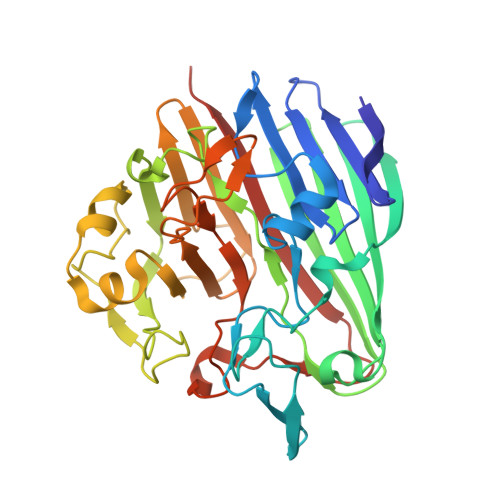High resolution X-ray structure of galactose mutarotase from Lactococcus lactis.
Thoden, J.B., Holden, H.M.(2002) J Biol Chem 277: 20854-20861
- PubMed: 11907040
- DOI: https://doi.org/10.1074/jbc.M201415200
- Primary Citation of Related Structures:
1L7J, 1L7K - PubMed Abstract:
Galactose mutarotase plays a key role in normal galactose metabolism by catalyzing the interconversion of beta-D-galactose and alpha-D-galactose. Here we describe the three-dimensional architecture of galactose mutarotase from Lactococcus lactis determined to 1.9-A resolution. Each subunit of the dimeric enzyme displays a distinctive beta-sandwich motif. This tertiary structural element was first identified in beta-galactosidase and subsequently observed in copper amine oxidase, hyaluronate lyase, chondroitinase, and maltose phosphorylase. Two cis-peptides are found in each subunit, namely Pro(67) and Lys(136). The active site is positioned in a rather open cleft, and the electron density corresponding to the bound galactose unequivocally demonstrates that both anomers of the substrate are present in the crystalline enzyme. Those residues responsible for anchoring the sugar to the protein include Arg(71), His(96), His(170), Asp(243), and Glu(304). Both His(96) and His(170) are strictly conserved among mutarotase amino acid sequences determined thus far. The imidazole nitrogens of these residues are located within hydrogen bonding distance to the C-5 oxygen of galactose. Strikingly, the carboxylate group of Glu(304) is situated at approximately 2.7 A from the 1'-hydroxyl group of galactose, thereby suggesting its possible role as a general acid/base group.
Organizational Affiliation:
Department of Biochemistry, University of Wisconsin, Madison, Wisconsin 53706, USA. [email protected]
















